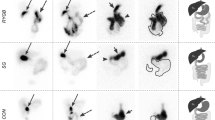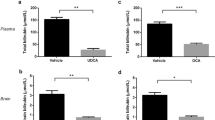Abstract
FOUR cases of jaundice were previously reported from this laboratory in which the hyperbilirubinæmia was not related to the breakdown of circulating erythrocytes nor to a defect in hepatic function1. The hyperbilirubinæmia was familial, the serum bilirubin predominantly indirect-reacting pigment and the total urobilinogen excretion in urine and stool increased. The bone marrows showed erythroid hyperplasia and the increased marrow activity was reflected in a peripheral reticulocytosis. Erythrocyte destruction, as measured by chromium-51 red cell survival, was not a causative factor. It was suggested that the excess bile pigments were derived from marrow erythrocytes or their precursors—either by their destruction or by a direct synthesis of bilirubin from hæm or its precursors. This short cut in bilirubin production was termed ‘shunt hyperbilirubinæmia’ and was thought to represent a marked exaggeration of the normal pathway in which at least 11 per cent of bile pigments (stercobilin) are derived from sources other than the hæm of the circulating red cell2. To test this postulate we have since studied four normals and one of the affected patients (A. P., case II)1, using 2-14C-glycine as an index of hæm and stercobilin formation.
This is a preview of subscription content, access via your institution
Access options
Subscribe to this journal
Receive 51 print issues and online access
$199.00 per year
only $3.90 per issue
Buy this article
- Purchase on Springer Link
- Instant access to full article PDF
Prices may be subject to local taxes which are calculated during checkout
Similar content being viewed by others
References
Israels, L. G., Suderman, H. J., and Ritzmann, S. E., Amer. J. Med., 27, 693 (1959).
London, I. M., West, R., Shemin, D., and Rittenberg, D., J. Biol. Chem., 184, 351 (1950).
Delory, G. E., The Analyst, 68, 5 (1943).
Watson, C. J., Lowry, P. T., Sborov, V. E., Hollinshead, W. H., Kohan, S., and Matte, H. O., J. Biol. Chem., 200, 697 (1953).
Dacie, J. V., The Hemolytic Anemias, Part 1 (J. A. Churchill, Ltd., London, 1960).
London, I. M., and West, R., J. Biol. Chem., 184, 359 (1950).
London, I. M., West, R., Shemin, D., and Rittenberg, D., J. Biol. Chem., 184, 365 (1950).
Grinstein, M., Bannerman, R. M., Vavra, J. D., and Moore, C. V., Amer. J. Med., 29, 18 (1960).
Author information
Authors and Affiliations
Rights and permissions
About this article
Cite this article
ISRAELS, L., ZIPURSKY, A. Primary Shunt Hyperbilirubinæmia. Nature 193, 73–74 (1962). https://doi.org/10.1038/193073a0
Issue Date:
DOI: https://doi.org/10.1038/193073a0
This article is cited by
-
Zur Genese der posthepatitischen Hyperbilirubinämie durch Ermittlung des Bilirubintransfers
Klinische Wochenschrift (1969)
-
Recent Advances in Jaundice
Irish Journal of Medical Science (1966)
Comments
By submitting a comment you agree to abide by our Terms and Community Guidelines. If you find something abusive or that does not comply with our terms or guidelines please flag it as inappropriate.



